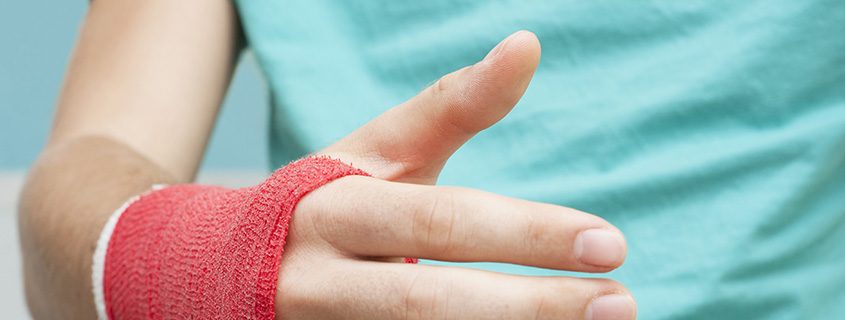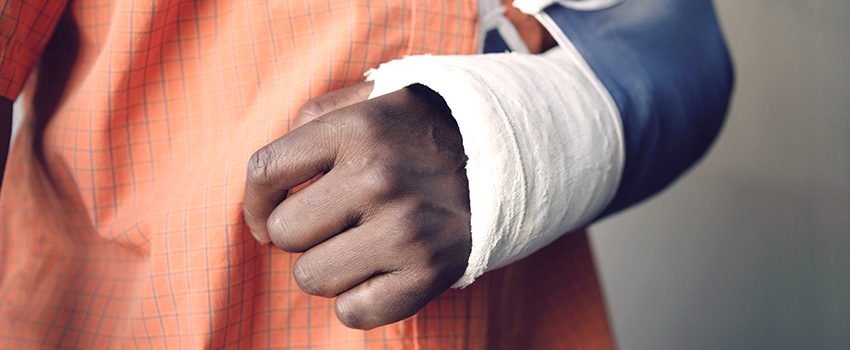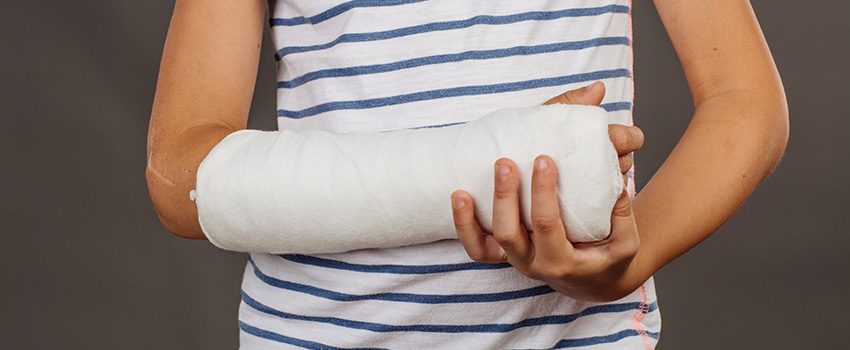Types of Shoulder Fractures
Shoulder fractures can result from a fall on the shoulder, a motor vehicle accident, contact sports, etc.
The shoulder is a complex joint connecting the arm to the body. The shoulder bones include the humerus (upper arm bone), the scapula (shoulder blade) and the clavicle (collarbone) (Figure 1). The upper end of the humerus has a ball-like shape that connects with the socket of the scapula, called the glenoid. Disruption of any of the parts of the shoulder can create difficulty with its function.
Types of Shoulder Fractures
The type of fracture varies by age. Most fractures in children occur in the clavicle bone. In adults, the most common fracture is of the top part of the humerus (proximal humerus). Some types include:
- Clavicle Fractures: This is the most common shoulder fracture, frequently the result of a fall (Figure 2).
- Scapula Fractures: Fractures of this bone rarely occur. They usually result from high-energy trauma such as motor vehicle accidents or a far fall.
- Proximal Humerus Fractures: Fractures of the upper part of the arm are more common in the older (over 65 years of age) population. Sometimes, there are just cracks in the bones, but they have not moved very far out of their normal position.
Some fractures are diagnosed using x-rays. Sometimes, a CT scan is needed to see more detail.
Treatment
Treatment for these fractures can vary. Some options include:
- Simple sling or “figure 8” strap worn for three to eight weeks, depending on the patient’s pain.
- Surgery, which may include placing plates and screws or wires and sutures (Figure 3). This is more often needed when there is injury to the glenoid (shoulder socket) or when broken bone pieces are severely out of place.
Once healed, there may be a bump over the fracture site which may decrease with time, but sometimes a bump will remain permanently. Shoulder movement can begin as soon as pain goes away; return to sports cannot occur until full shoulder strength returns. Return to contact sports would be considered only when the fracture is fully healed as shown on an x-ray.
Selection of treatment depends upon the patient’s activity level, the location of the fracture and the severity of the fracture.
Recovery
Shoulder fractures may leave a patient with permanent shoulder stiffness, regardless of how well the bones were repaired or joint replacement performed. Recovery may require the use of physical therapy to assist in improving motion and strength. Consult your physician for the best option.
Orthopedic Sports Medicine Center of Oregon is located in Downtown Portland Oregon. Dr. Dominic Patillo, one of our Board-Certified Orthopedic Surgeons, specializes in hand surgery. His practice focuses on the treatment of both simple and complex hand and upper extremity conditions as well as general orthopaedic trauma. He is experienced with modern microsurgical techniques including nerve and vessel reconstruction.
Common problems treated include:
- carpal tunnel syndrome
- tennis elbow
- wrist pain
- sports injuries of the hand and wrist
- fractures of the hand, wrist, and forearm
- trigger finger
Other problems treated can include arthritis, nerve and tendon injuries, and congenital limb differences (birth defects).
If you have pain in your fingers, hand, wrist or arm, or if you have other upper-extremity related concerns, please consult our hand specialist Dr. Dominic Patillo for a consultation.




